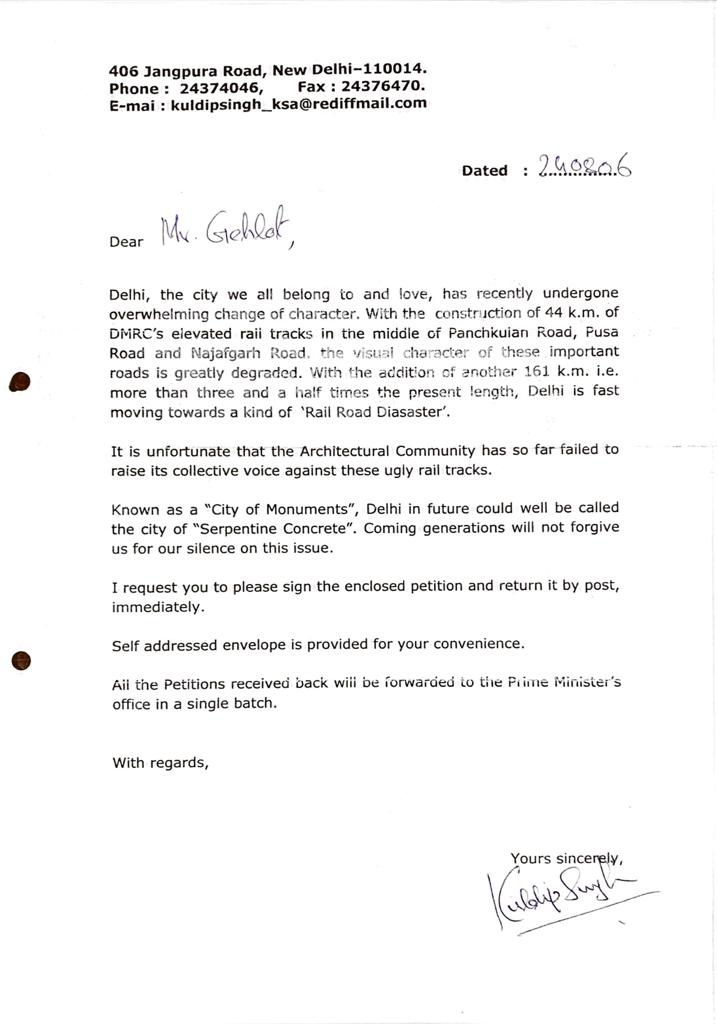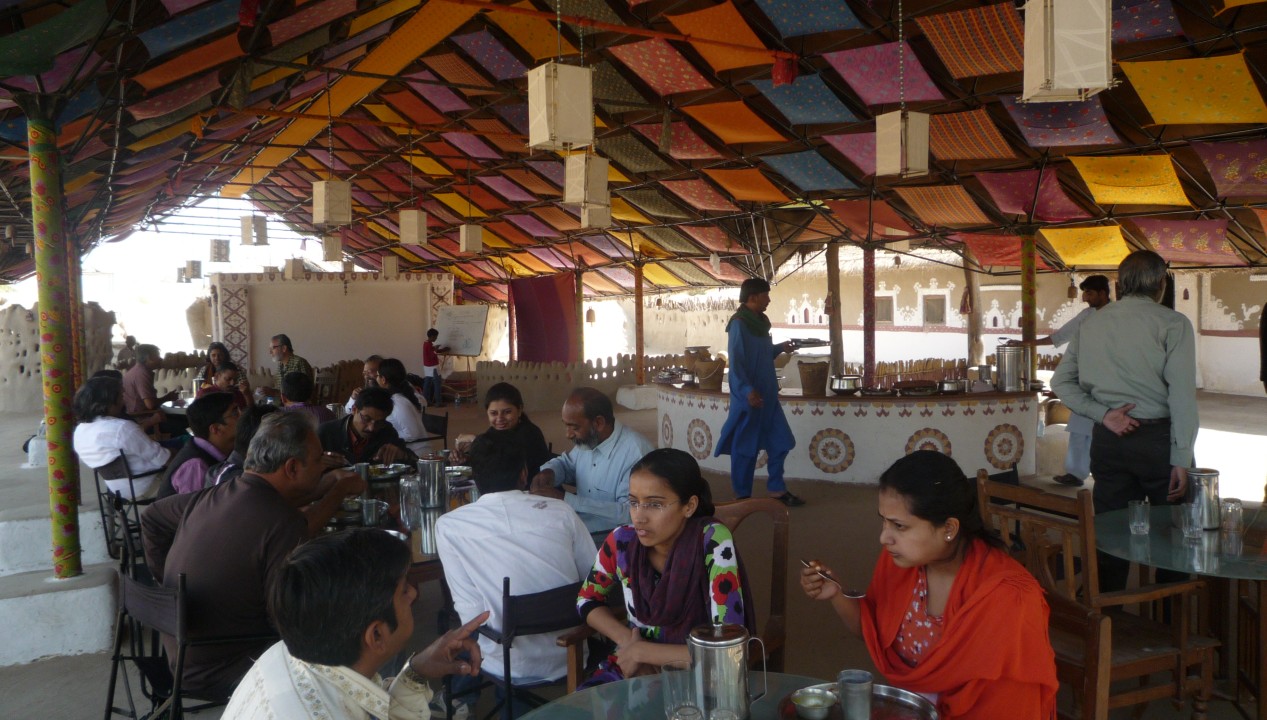Architect Kuldip Singh through his letter (2006) to the Transport Minister of Delhi, Mr. Kailash Gehlot, had warned about the overwhelming change in the character of Delhi city due to expansion of metro rail. He mentioned that Delhi, which was known for its monuments, is now turning into a concrete monster.
In his letter, he also shared that, it was unfortunate that the architectural community had failed to raise its collective voice against the ugly metro rail tracks in Delhi.
The copy of his letter is below:

Also read: Tribute to Kuldip Singh on his 86th birthday







